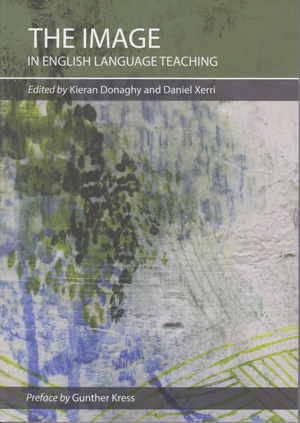The Image in English Language Teaching
The Image in English Language Teaching
Edited by Kieran Donaghy
and Daniel Xerri ELT Council 2017 978-99957-1-151-1

The Image in English Language Teaching argues that, in spite of a dramatic shift in how we engage with visual media on a regular basis in today’s society, the ELT industry has been slow to adapt. Although some coursebooks are beginning to use images to stimulate debate in classrooms, there is still a dominance of mono-modal texts, even though students engage with multi-modal texts much more frequently outside class. This current state of affairs is due to little attempt being made to design materials in accordance with pedagogies espousing the virtues of visual literacy, resulting in superficial stock photos in coursebooks being underexploited. Indeed, despite some teacher development books promoting the critical use of visual media in classrooms since 1966, ELT teachers today require visual literacy training more than ever, especially with the increasing use of technology in the classroom causing visual literacy to be not just overlooked, but also misinterpreted. By bringing together a series of papers based on talks given at The Image Conference (five conferences have been held so far, supported by the IATEFL Learning Technologies SIG), this book intends to encourage teachers (and, indirectly, their learners) to become more visually literate, through discussing the benefits and challenges associated with these new literary practices in ELT. In addition, several chapters provide activities to try out in the classroom.
An example of the promotion of visual literacy is the use of video in the language classroom. In Chapter 2, Anna Whitcher expresses her belief that processes such as film-making can instigate positive change in the classroom by promoting not just ‘21st-century skills’, but also visual literacy through critical examination of the students’ finished products.
However, while it hasn’t always been feasible to engage in both the process and the product of film-making in the ELT classroom, videos are now ultimately changing the ways in which we learn, which means that teachers should be trained to exploit them effectively. Training should not just be limited to video, however. The implications of using images from social media in the classroom are also explored in this book, with Magdalena Wasilewska arguing that coursebook images won’t suffice to satiate digital natives’ preferences for using visual media to communicate. Teachers, therefore, need to be selective in choosing images from a diverse array of sources: images that either generate emotion or contain enough visual clues and recognisable concepts for the learners to be able to use them to develop their own language skills.
But it is not just the selection of visual media that is critical, but how this media is used in class. Personalised and reflective processes, ranging from journal-writing to ‘artist-in-residence’ programmes, mentioned by Chrysa Papalazarou and Emma Louise Pratt respectively, allow for artwork to be further incorporated into classes in a beneficial way, and it is clear that images from a plethora of sources provide teachers with a wealth of opportunities to develop visual literacy alongside language acquisition. An example of this is storytelling, as explored by Paul Dummett, which can foster greater emotional engagement, leading to deeper processing and ultimately longer-lasting learning. However, the book argues that these sorts of tasks have not truly had their potential explored, and run the risk of becoming short-term trends at the mercy of ELT publishers, an issue also facing digital games in ELT, as argued by Paul Driver.
The conclusion is that visual media clearly play an integral role in classrooms yet remain underexploited by teachers and publishers. Despite appearing quite academic in nature, this book provides a fascinating insight into how images and video can be utilised in the language class to develop visual literacy awareness. By providing the reader with a range of activities to trial in the classroom, this book truly encourages us to reconsider our role, not just as language teachers, but also as practitioners of visual literacy, so that we can ensure that our classrooms are more relevant and more in tune with the needs of our students in an increasingly modernised society.
Tom Flaherty
Barcelona, Spain
Comments
Write a Comment
Comment Submitted